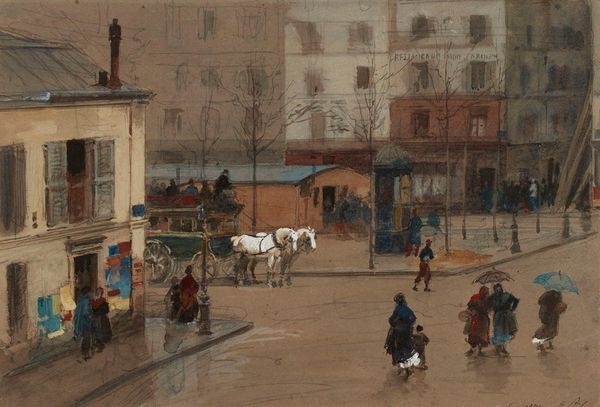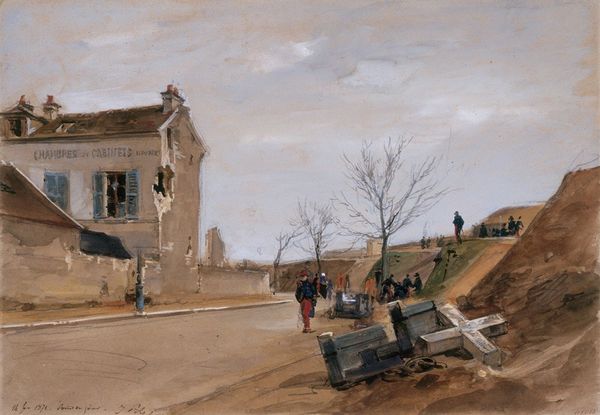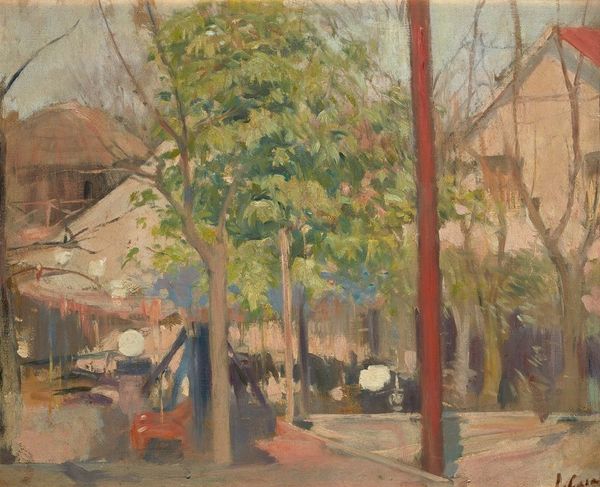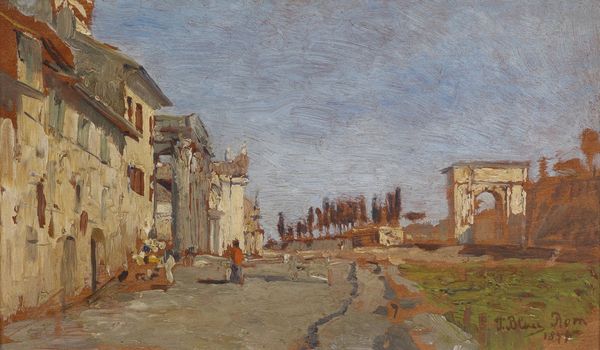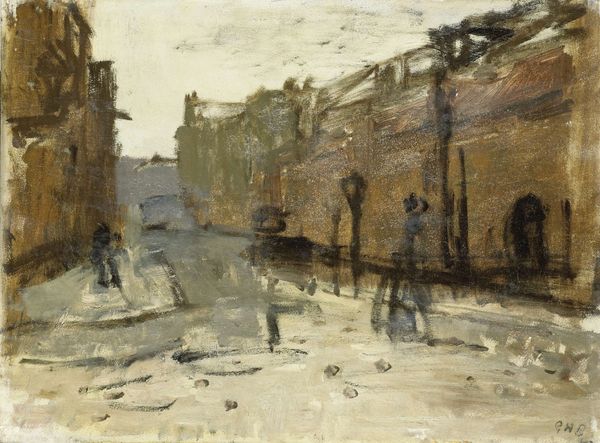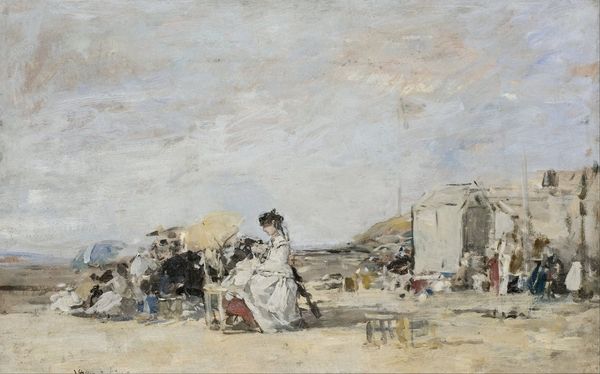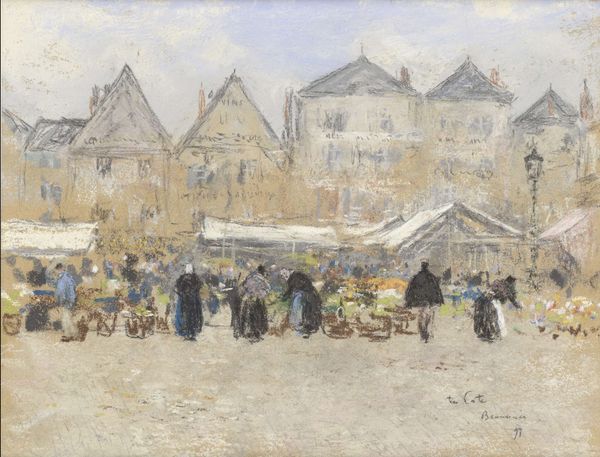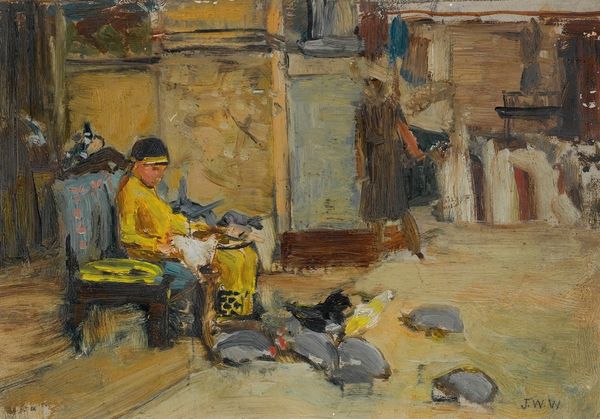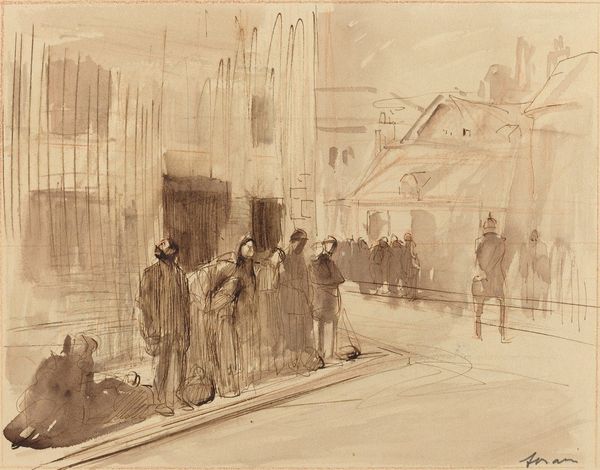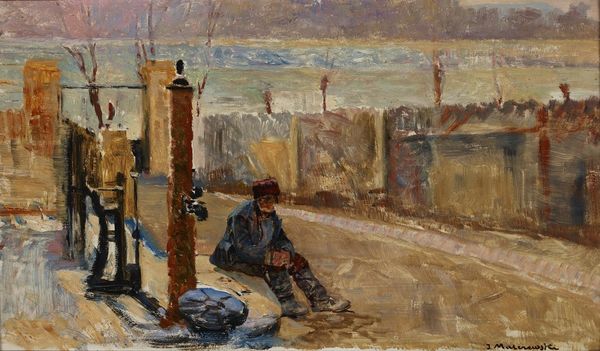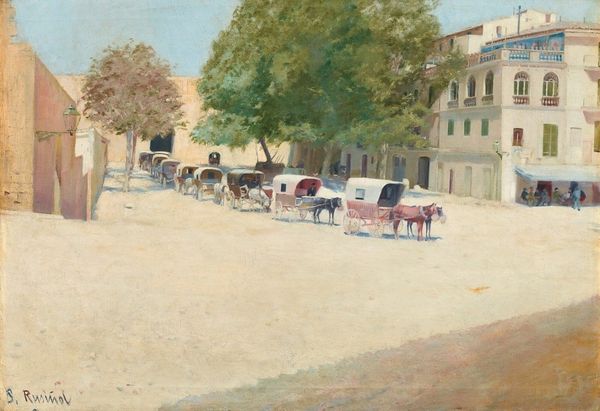
painting, plein-air, watercolor
#
painting
#
impressionism
#
plein-air
#
watercolor
#
cityscape
#
genre-painting
Copyright: Public Domain: Artvee
Curator: What a stark scene. The dominant grey tones and bare trees convey a sense of bleakness. Editor: We're looking at "Soldats du 37e de Ligne boulevard de Clichy," a plein-air watercolor and painting by Isidore Pils, created in 1871. It depicts soldiers on a Parisian boulevard, presumably during or just after the Franco-Prussian War. The figures clustered around small fires suggest both hardship and camaraderie. Curator: That smoke rising from those fires... it is a primal symbol. Warmth, community, but also the potential for destruction. Pils really captures that tension. Given the date, the painting speaks volumes about the emotional and material state of Paris then. Editor: Indeed. Consider the historical context. 1871 was the year of the Paris Commune, a revolutionary government that took control of the city after France's defeat. Pils was deeply affected by the political upheaval and the siege of Paris, wasn’t he? This piece becomes a poignant document of that specific moment, capturing the day-to-day existence under extraordinary circumstances. The ordinary existence carried on but forever altered. Curator: Observe how Pils used color so selectively – those dabs of red on the soldiers' uniforms. Red often embodies vitality, but here, set against the muted greys and browns, it almost feels like a desperate clinging to life, a faint heartbeat in a city on its knees. What do you make of his decision to show a public space like the Boulevard, which is normally about bustling exchange, so deserted. Editor: The near-absence of other figures transforms a typically bustling scene into a symbol of societal rupture. Boulevards are inherently political spaces, reflections of a regime’s authority; here, that power structure appears to be in disarray, making visible the fractures within the French State after its catastrophic defeat. That visible poverty would be uncharacteristic for art, and speaks volumes for the Commune-like political project happening then and a wider shift of artists taking to "truthful" painting. Curator: You have a keen sense of how that relates to the broader cultural shift. It makes me see the painting less as just a historical document, but more a sign of shared experience in hard times. Editor: I find that looking at its original location provides context. I hope you see that too!
Comments
No comments
Be the first to comment and join the conversation on the ultimate creative platform.
